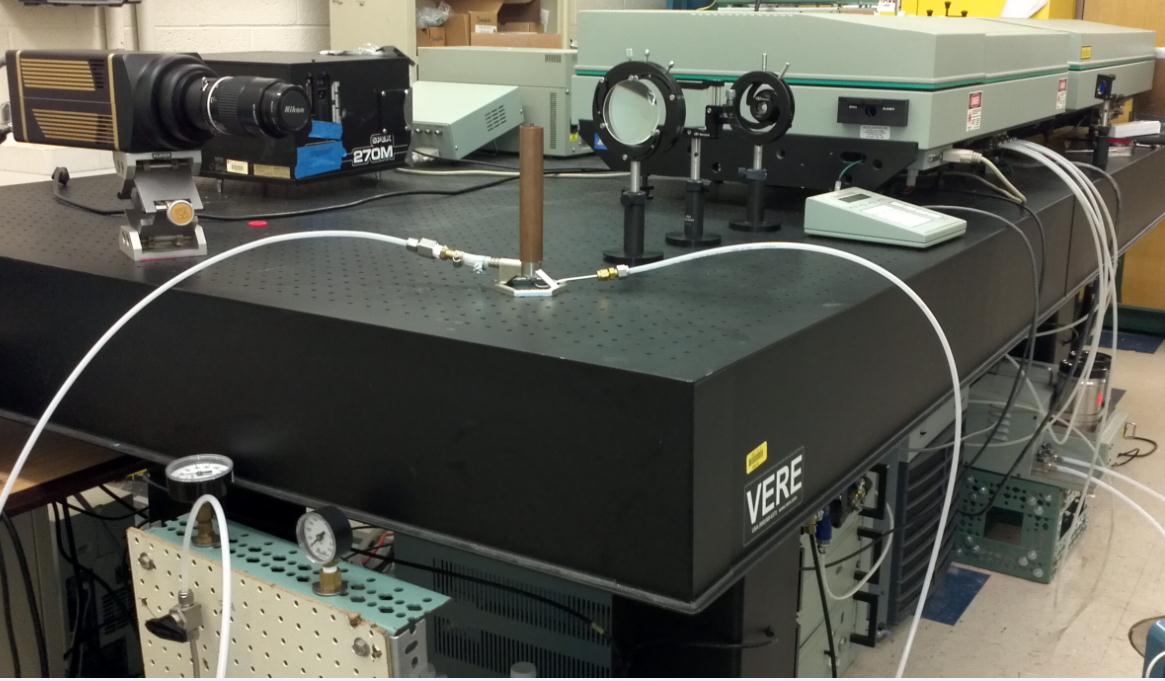Understanding the soot formation process in combustion requires a laser diagnostic technique known as Laser Induced Incandescence (LII). In this process, soot particles, in a flame, are hit by high power laser beam. Soot particles, through the process of absorption, absorb the incident laser beam and achieve high saturation temperature. At this high temperature they produce black body radiation. By detecting the black body radiation, soot is characterized in a flame.
A high power Nd:YAG laser at 10Hz and 532nm is used. The laser beam is converted into a laser sheet using the cylindrical and spherical lenses. This laser sheet is passed through the flame to produce incandescence signals from the soot particles. These signals are detected using an ICCD camera.

LII and PLIF Experimental Setup